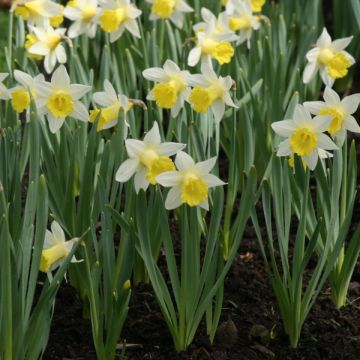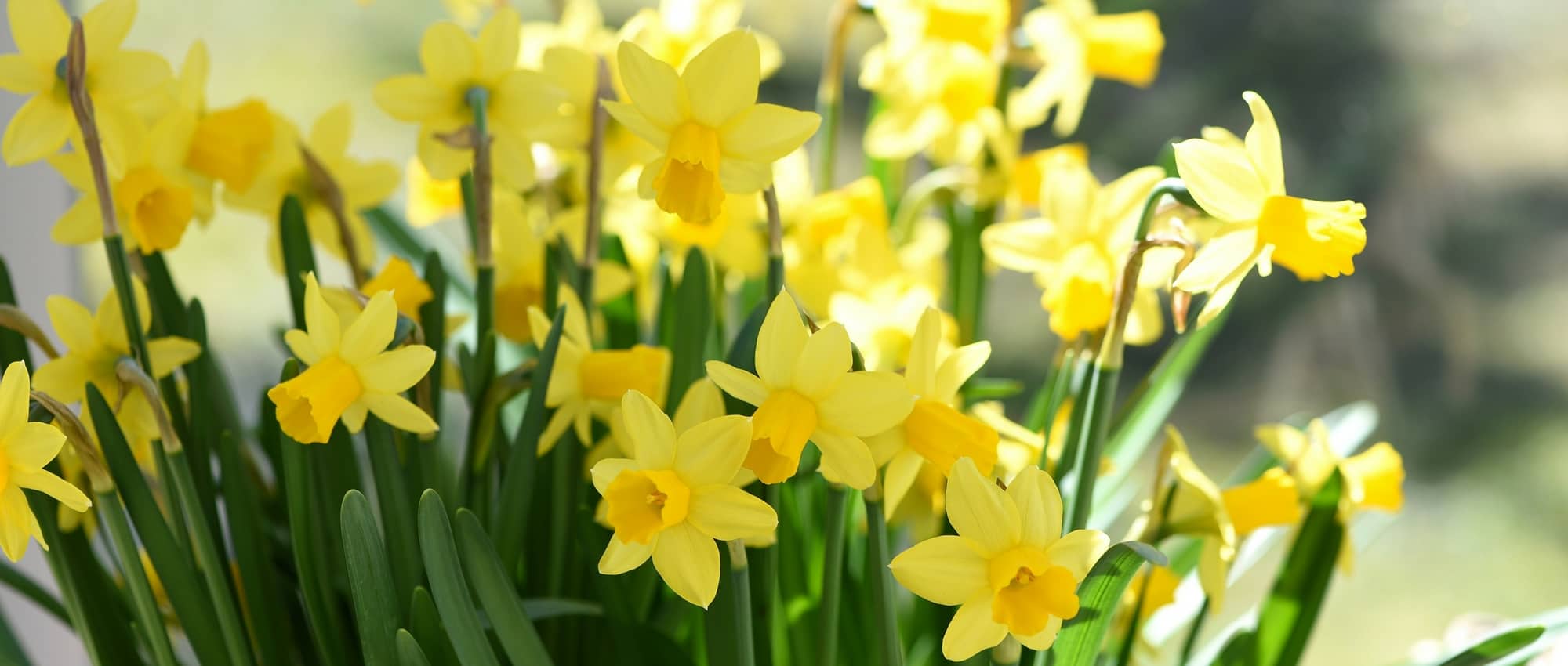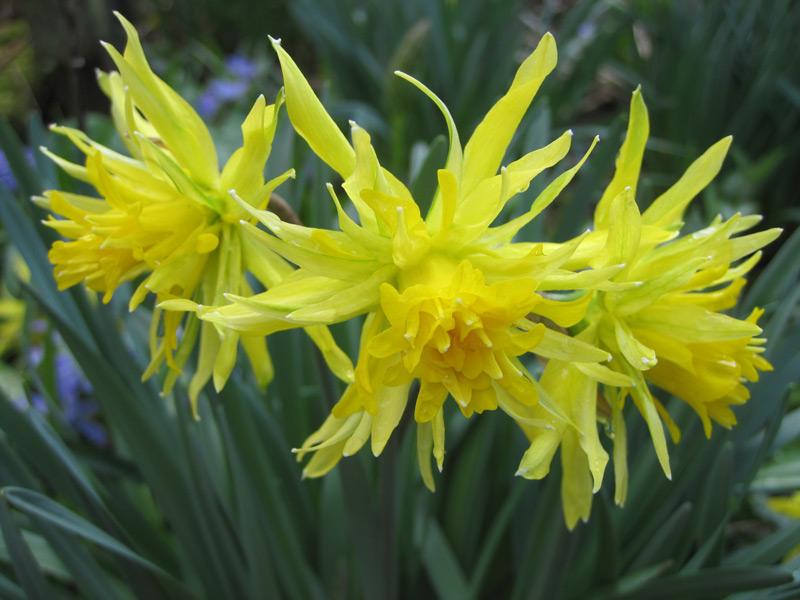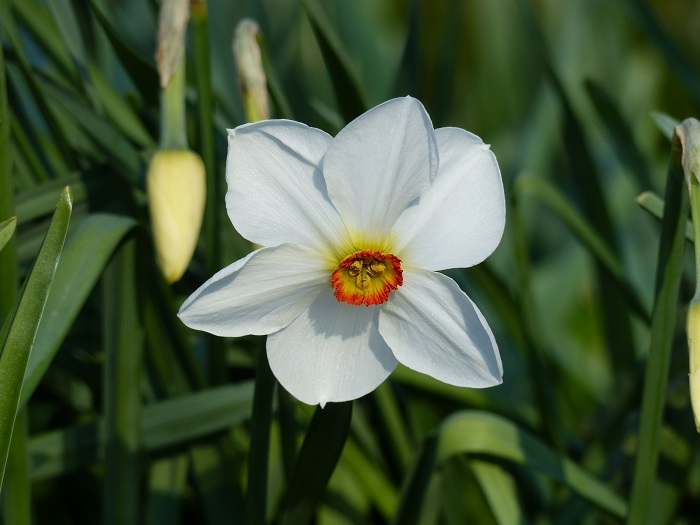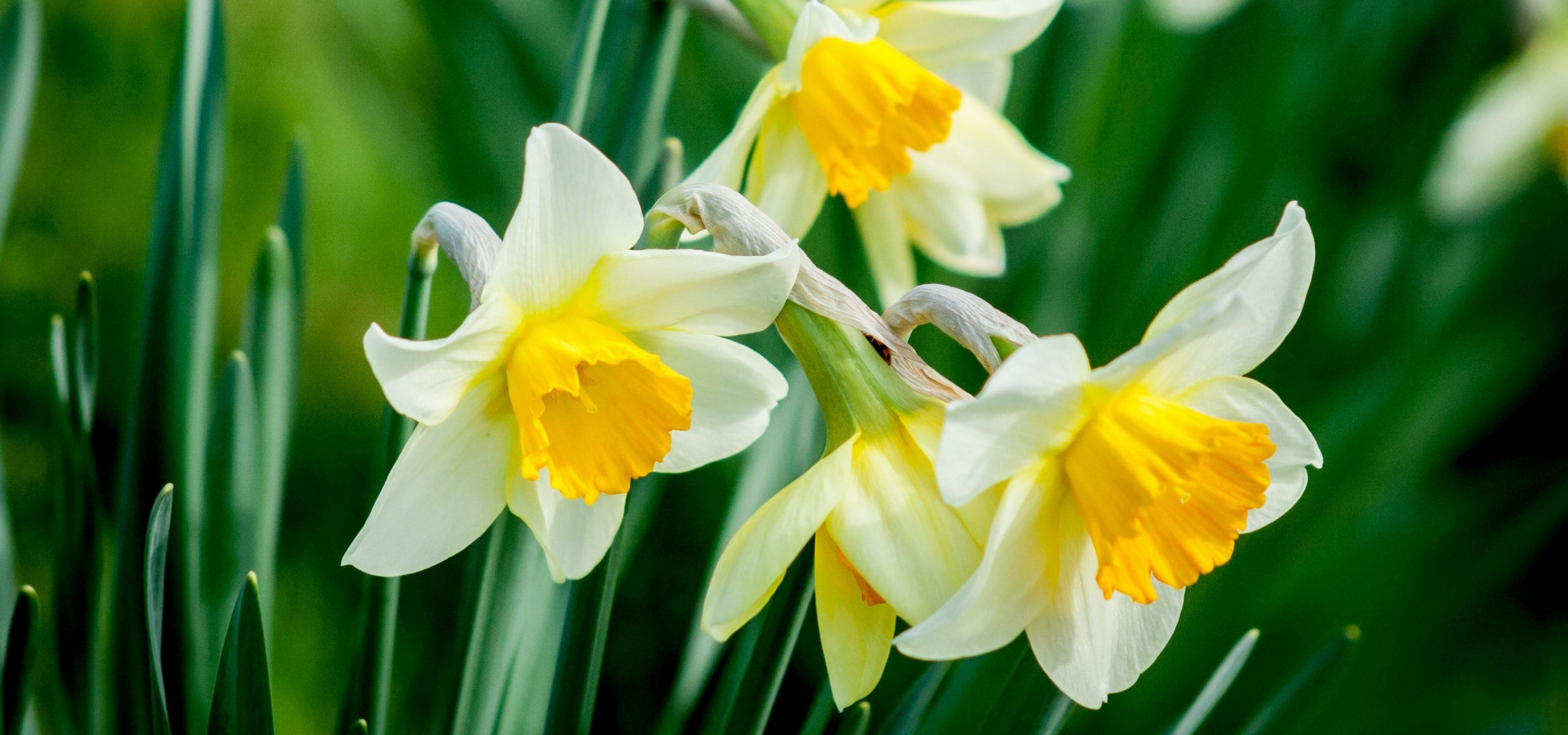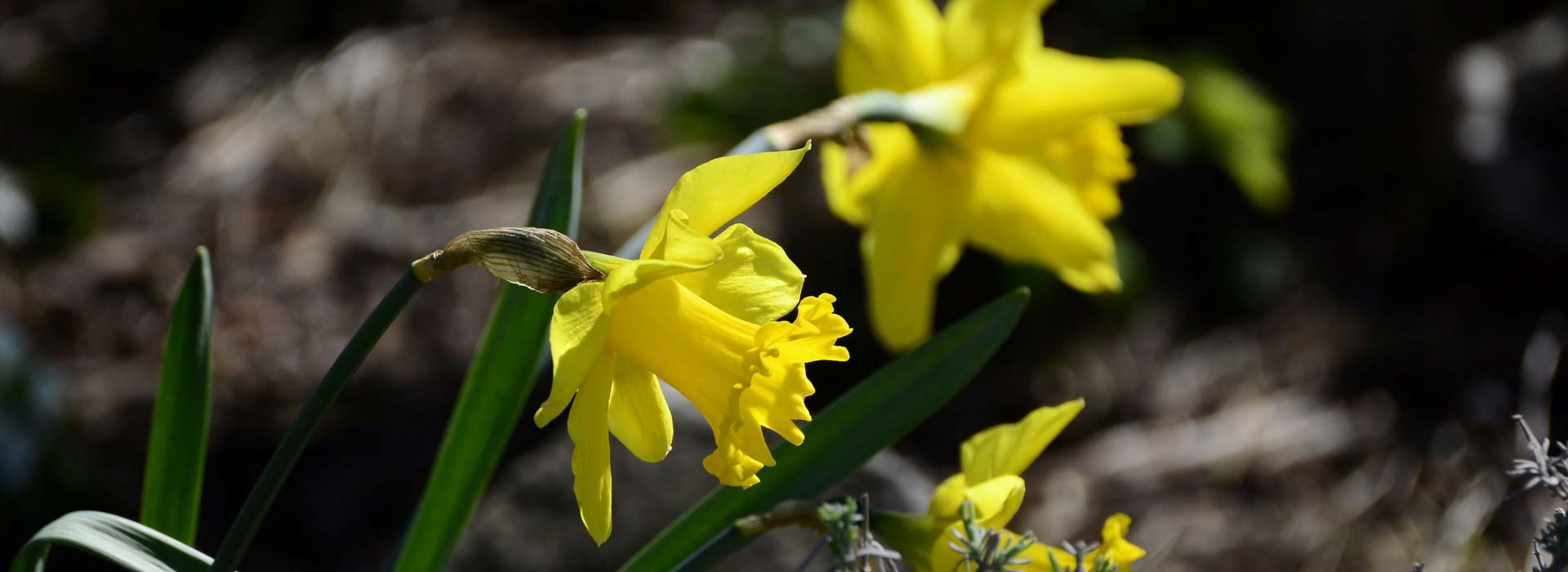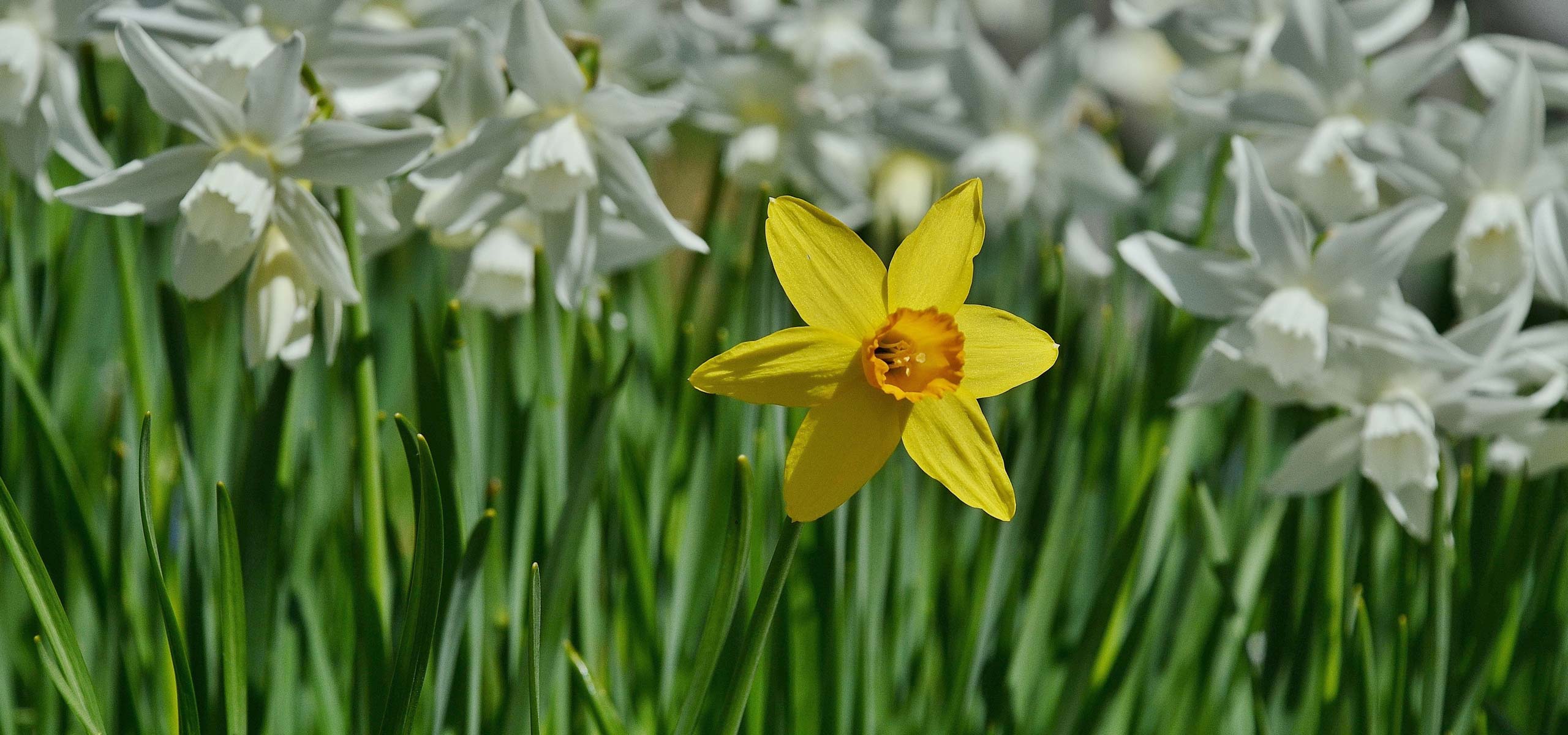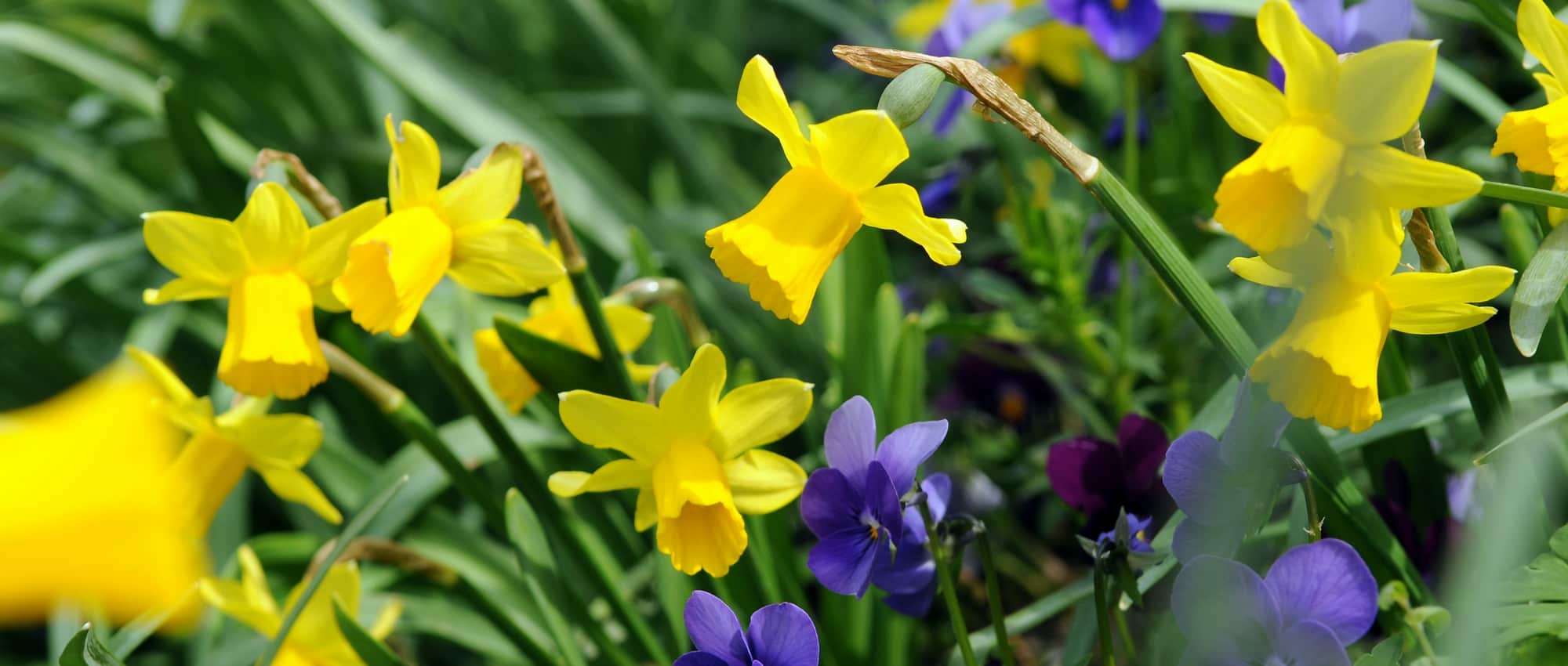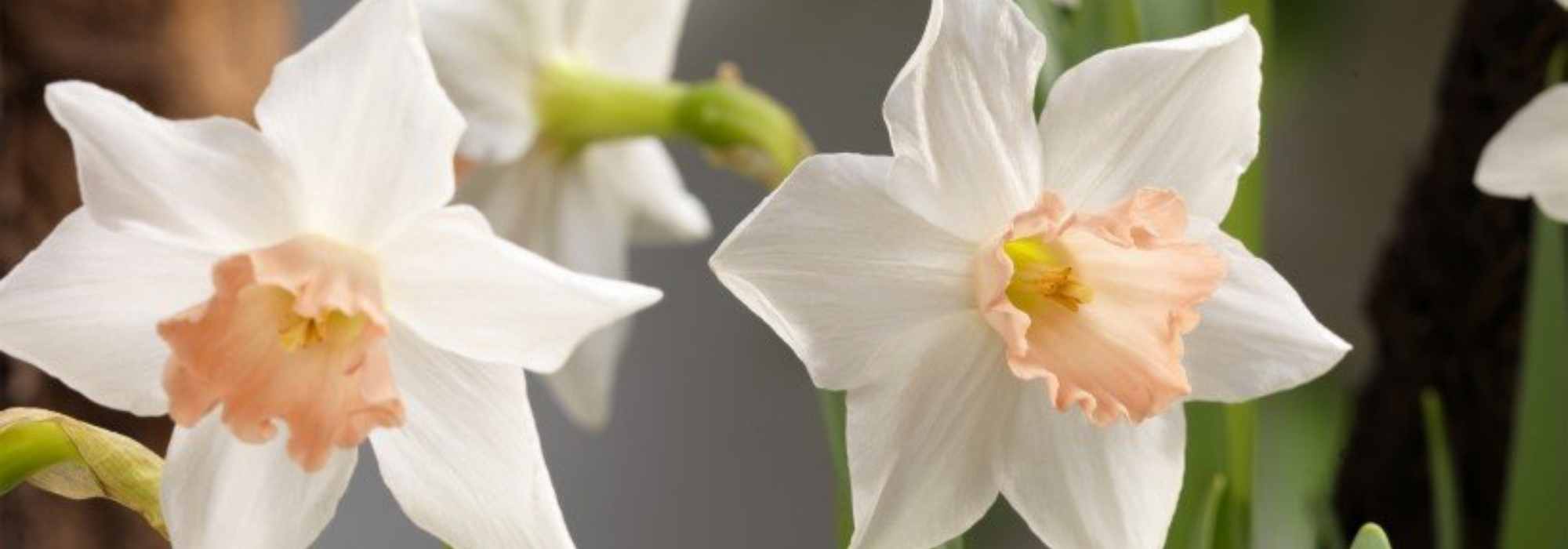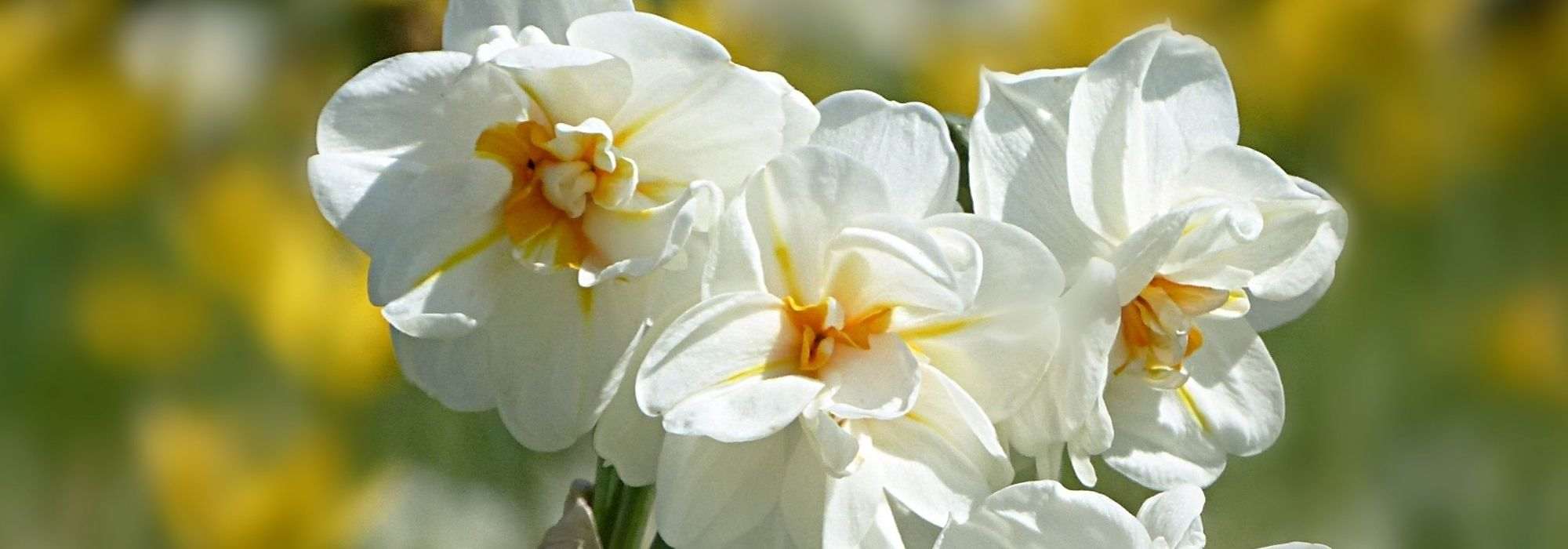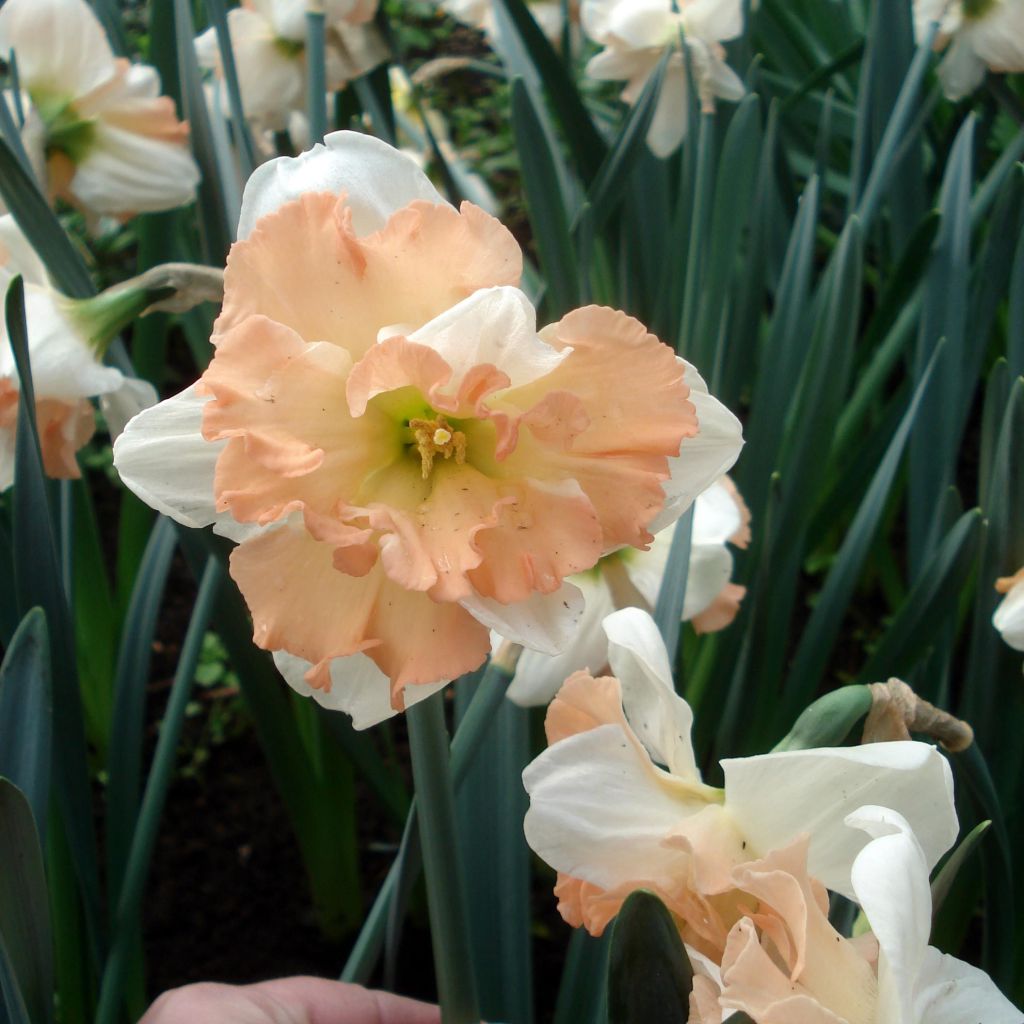

Narcisse Apple Pie
View more pictures
Hide images
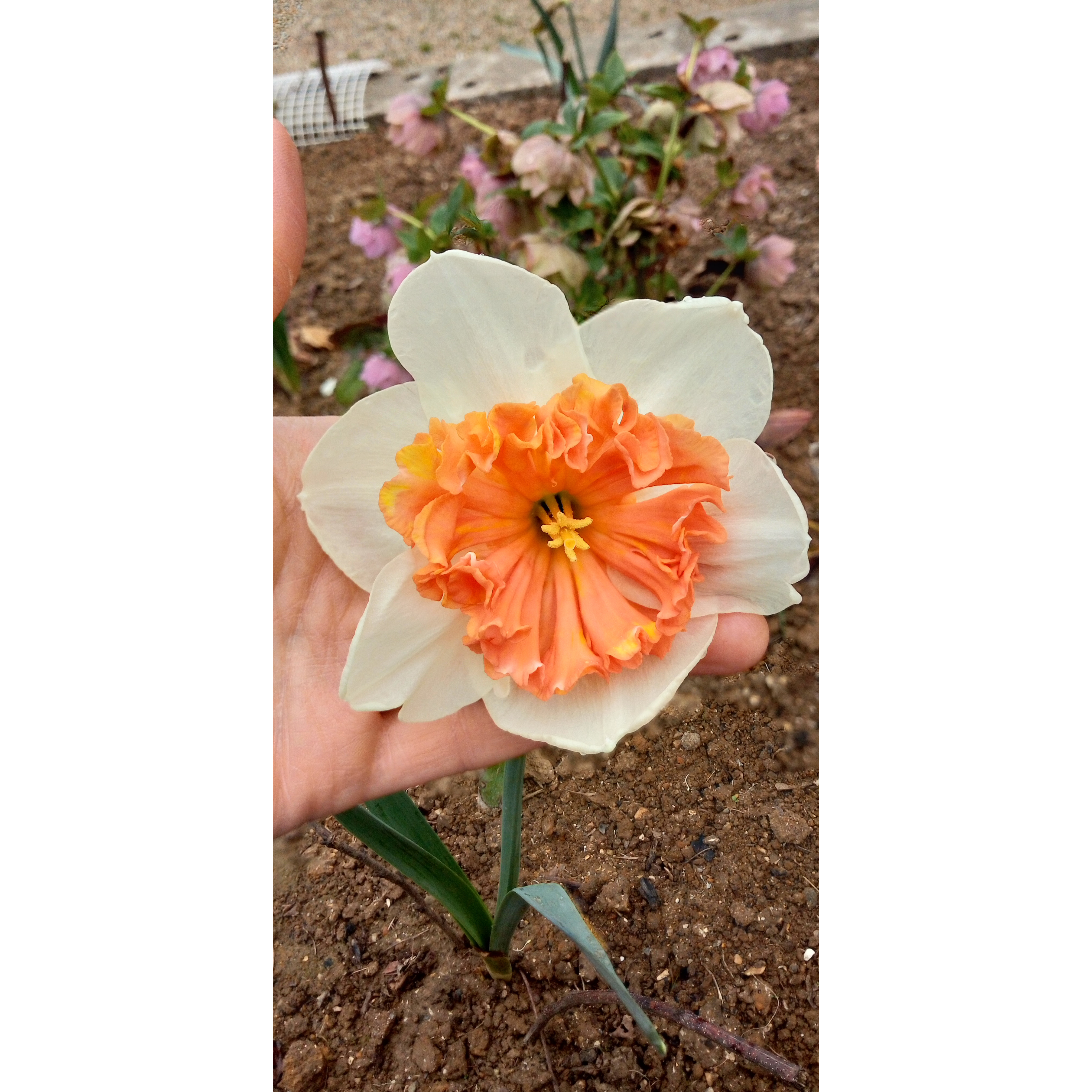
Jean-Christophe L.

Narcissus Apple Pie on the 5th day of flowering.
Jean-Christophe L. • 76 FR
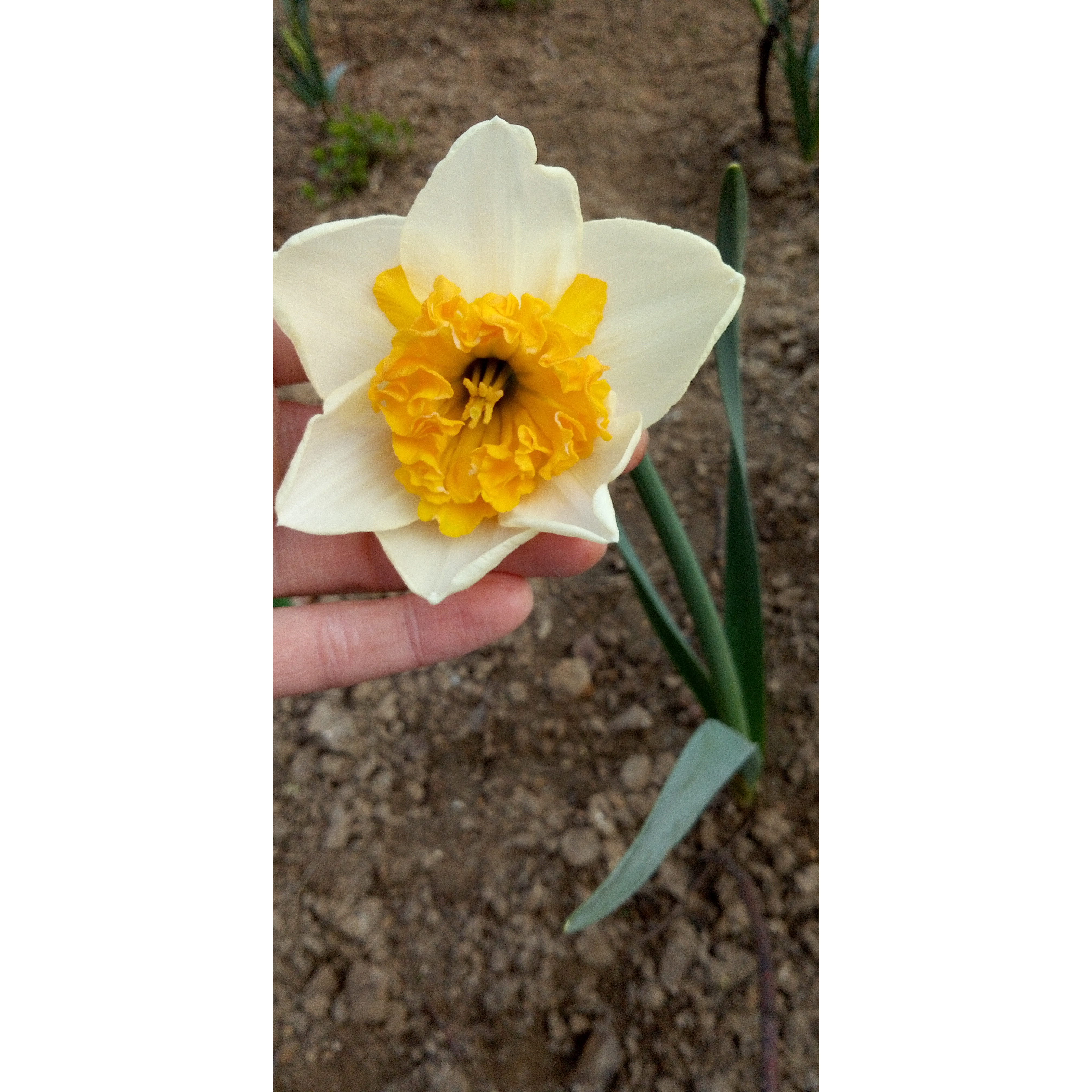
Jean-Christophe L.

Narcissus Apple Pie on the first day of flowering
Jean-Christophe L. • 76 FR
Narcissus Apple Pie - Daffodil
Narcissus Apple Pie
Daffodil, Narcissus
I didn't think that the daffodil would be entirely yellow in the early days before taking on a pinkish hue, and in that regard I am somewhat disappointed. They are integrated into a flowerbed and the yellow in the early days doesn't create the most beautiful effect.
Jean-Christophe, 01/04/2022
Special offer!
Receive a €20 voucher for any order over €90 (excluding delivery costs, credit notes, and plastic-free options)!
1- Add your favorite plants to your cart.
2- Once you have reached €90, confirm your order (you can even choose the delivery date!).
3- As soon as your order is shipped, you will receive an email containing your voucher code, valid for 3 months (90 days).
Your voucher is unique and can only be used once, for any order with a minimum value of €20, excluding delivery costs.
Can be combined with other current offers, non-divisible and non-refundable.
Why not try an alternative variety in stock?
View all →This plant carries a 6 months recovery warranty
More information
We guarantee the quality of our plants for a full growing cycle, and will replace at our expense any plant that fails to recover under normal climatic and planting conditions.
Would this plant suit my garden?
Set up your Plantfit profile →
Description
Narcissus Apple Pie is a beautifully coloured and slightly fragrant variety of split-crowned narcissus. It blooms in April, with a large bicolour white and pink flower on a sturdy stem adorned with a lavish fringed crown. This variety quickly multiplies in the garden, forming beautiful clumps in sunny beds within a few years. With its short and sturdy stem, it is fantastic in the garden, and its flowers are perfect for bouquets.
The 'Apple Pie' Narcissus, introduced in 2007, belongs to the lily family (Amaryllidaceae), more specifically to division 11 of the large narcissus family, which comprises 13 divisions. The Narcissus genus includes about 50 species found primarily in the western Mediterranean, but also in Africa and Asia. 'Apple Pie' narcissus, like most split-crowned narcissus, is the result of cross-breeding between N.poeticus and N (x) pseudonarcissus, or N.incomparabilis. The plant produces a sturdy and strong stem 40 cm (16in) high in bloom. It is a mid-season bloomer, flowering in April, with a large yellow-green floral bud that opens into magnificent 9.5 cm (4in) wide flowers. The flowers have six ivory-white, very wide petal-like tepals. The six stamens are inserted into a flared crown, wavy at the edges, composed of 6 petals fused at the base. This cup of salmon pink gradually changes to orange, and the throat turns golden yellow. The linear foliage is deciduous and disappears in summer.
With such a variety of narcissus to choose from, one can enjoy them for three months in spring without ever getting bored. They all naturalise easily, offer endless variations of yellow and white, and often emit sweet fragrances. These are all reasons to grow them in large clumps on the lawn or at the edge of flower beds (at least 20 bulbs) for a stunning effect. Pair 'Apple Pie' narcissus in country or romantic beds with scillas and hyacinths, double tulips, forget-me-nots, daisies, chamomiles, or liverworts. A group of 'Apple Pie' Narcissus in a vase creates a sensational effect. This narcissus is perfect for containers.
Plant habit
Flowering
Foliage
Botanical data
Narcissus
Apple Pie
Amaryllidaceae
Daffodil, Narcissus
Cultivar or hybrid
Other Daffodils A to Z
View all →Planting and care
Narcissi bloom from March to May and come back every year. They are very easy to grow in the shade of a wood or a sunny flower bed. Plant them 10 cm (4in) deep and 10 cm (4in) apart in clusters of at least 5 bulbs, in uniform colors or mixed. To plant them in a lawn: lift the turf, dig and loosen the soil to a depth of at least 20 cm (8in) (the height of a spade), plant your bulbs, cover with soil and replace the turf. Choose a location where you don't mow early, as you will need to let the narcissus leaves wither before cutting them. This is when the bulb regenerates and prepares flowers for the following year. Remember to cut the flowers as soon as they have withered to prevent seed formation which would unnecessarily deplete the bulb.
Planting period
Intended location
Care
Planting & care advice
-
, onOrder confirmed
Reply from on Promesse de fleurs
Haven't found what you were looking for?
Hardiness is the lowest winter temperature a plant can endure without suffering serious damage or even dying. However, hardiness is affected by location (a sheltered area, such as a patio), protection (winter cover) and soil type (hardiness is improved by well-drained soil).

Photo Sharing Terms & Conditions
In order to encourage gardeners to interact and share their experiences, Promesse de fleurs offers various media enabling content to be uploaded onto its Site - in particular via the ‘Photo sharing’ module.
The User agrees to refrain from:
- Posting any content that is illegal, prejudicial, insulting, racist, inciteful to hatred, revisionist, contrary to public decency, that infringes on privacy or on the privacy rights of third parties, in particular the publicity rights of persons and goods, intellectual property rights, or the right to privacy.
- Submitting content on behalf of a third party;
- Impersonate the identity of a third party and/or publish any personal information about a third party;
In general, the User undertakes to refrain from any unethical behaviour.
All Content (in particular text, comments, files, images, photos, videos, creative works, etc.), which may be subject to property or intellectual property rights, image or other private rights, shall remain the property of the User, subject to the limited rights granted by the terms of the licence granted by Promesse de fleurs as stated below. Users are at liberty to publish or not to publish such Content on the Site, notably via the ‘Photo Sharing’ facility, and accept that this Content shall be made public and freely accessible, notably on the Internet.
Users further acknowledge, undertake to have ,and guarantee that they hold all necessary rights and permissions to publish such material on the Site, in particular with regard to the legislation in force pertaining to any privacy, property, intellectual property, image, or contractual rights, or rights of any other nature. By publishing such Content on the Site, Users acknowledge accepting full liability as publishers of the Content within the meaning of the law, and grant Promesse de fleurs, free of charge, an inclusive, worldwide licence for the said Content for the entire duration of its publication, including all reproduction, representation, up/downloading, displaying, performing, transmission, and storage rights.
Users also grant permission for their name to be linked to the Content and accept that this link may not always be made available.
By engaging in posting material, Users consent to their Content becoming automatically accessible on the Internet, in particular on other sites and/or blogs and/or web pages of the Promesse de fleurs site, including in particular social pages and the Promesse de fleurs catalogue.
Users may secure the removal of entrusted content free of charge by issuing a simple request via our contact form.
The flowering period indicated on our website applies to countries and regions located in USDA zone 8 (France, the United Kingdom, Ireland, the Netherlands, etc.)
It will vary according to where you live:
- In zones 9 to 10 (Italy, Spain, Greece, etc.), flowering will occur about 2 to 4 weeks earlier.
- In zones 6 to 7 (Germany, Poland, Slovenia, and lower mountainous regions), flowering will be delayed by 2 to 3 weeks.
- In zone 5 (Central Europe, Scandinavia), blooming will be delayed by 3 to 5 weeks.
In temperate climates, pruning of spring-flowering shrubs (forsythia, spireas, etc.) should be done just after flowering.
Pruning of summer-flowering shrubs (Indian Lilac, Perovskia, etc.) can be done in winter or spring.
In cold regions as well as with frost-sensitive plants, avoid pruning too early when severe frosts may still occur.
The planting period indicated on our website applies to countries and regions located in USDA zone 8 (France, United Kingdom, Ireland, Netherlands).
It will vary according to where you live:
- In Mediterranean zones (Marseille, Madrid, Milan, etc.), autumn and winter are the best planting periods.
- In continental zones (Strasbourg, Munich, Vienna, etc.), delay planting by 2 to 3 weeks in spring and bring it forward by 2 to 4 weeks in autumn.
- In mountainous regions (the Alps, Pyrenees, Carpathians, etc.), it is best to plant in late spring (May-June) or late summer (August-September).
The harvesting period indicated on our website applies to countries and regions in USDA zone 8 (France, England, Ireland, the Netherlands).
In colder areas (Scandinavia, Poland, Austria...) fruit and vegetable harvests are likely to be delayed by 3-4 weeks.
In warmer areas (Italy, Spain, Greece, etc.), harvesting will probably take place earlier, depending on weather conditions.
The sowing periods indicated on our website apply to countries and regions within USDA Zone 8 (France, UK, Ireland, Netherlands).
In colder areas (Scandinavia, Poland, Austria...), delay any outdoor sowing by 3-4 weeks, or sow under glass.
In warmer climes (Italy, Spain, Greece, etc.), bring outdoor sowing forward by a few weeks.






























